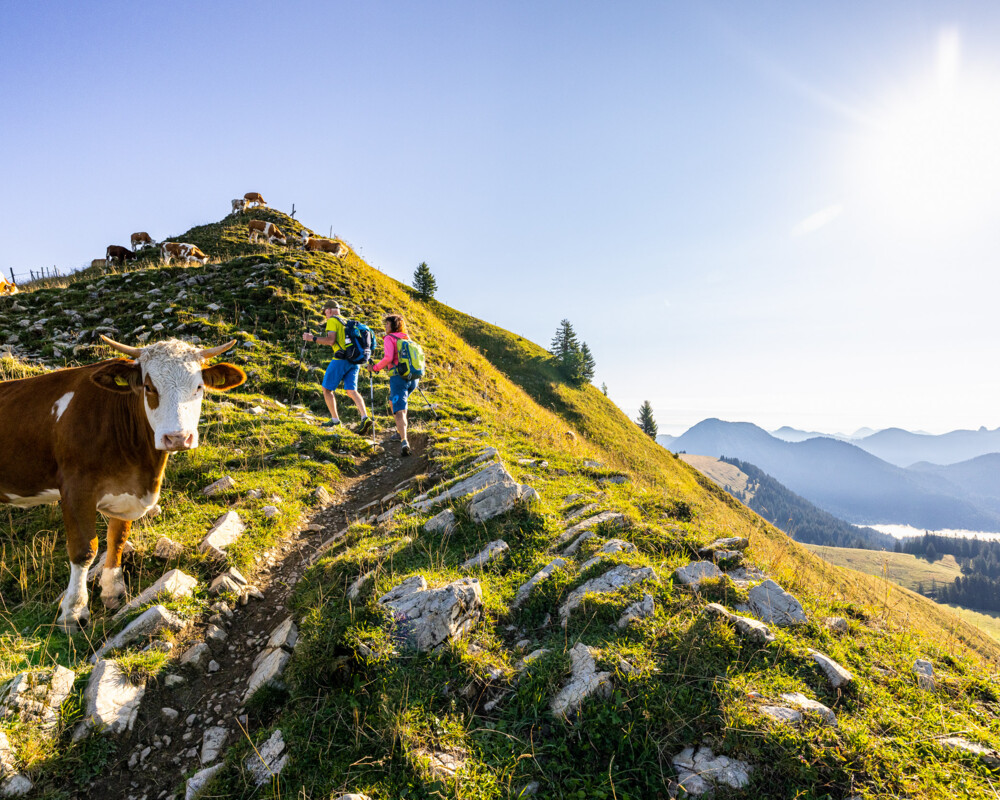Cows on the trail
With the alpine cattle drive, life returns to the mountain ranges: the cows are allowed back on the alpine pastures. At the same time, many sports and recreation enthusiasts are attracted to the mountains, and many hiking and cycling trails cross the pastures. Encounters with these animals can lead to dangerous situations. What is the right behaviour to avoid them?
7 tips for handling cows correctly:
- Keep your distance and respect fences
When you are in a pasture, you should keep sufficient distance from the cows. If possible, stay on the marked path. If an animal is blocking the path, keep as far away as possible. If there is a gate, use it, then close it and cross the pasture quickly.
- Dogs must be kept on a lead
Always keep dogs on a short lead around cows. Caution: if a cow threatens to attack, unleash the dog immediately.
- Keep trails and pastures clean
Please keep the mountains and pastures clean: take your rubbish, cans, glass, dog faeces, etc. with you or dispose of it properly. Rubbish and dog faeces can cause illness or death in cows.
- Be careful with mother cows and calves
Even though calves look cute, please do not pet or feed them. If a mother cow feels her offspring is in danger, she may attack the perceived intruder violently to protect her young.
- Read the Body language
You should not stare at a cow. You should remain calm so as not to frighten them suddenly. Watch for threatening gestures from the animals - lowering the head, scratching, bellowing or snorting.
- If it comes to the worst
If a cow approaches or even attacks, remain calm, do not turn your back on the animal and leave the pasture as quickly as possible. In an extreme emergency, hit the cow on the nose with a (walking) stick, for example.
- Observation and awareness of other mountaineers
You can usually tell how the cows behave from a distance. If you notice others behaving inappropriately or carelessly towards the cows, just point it out immediately!


